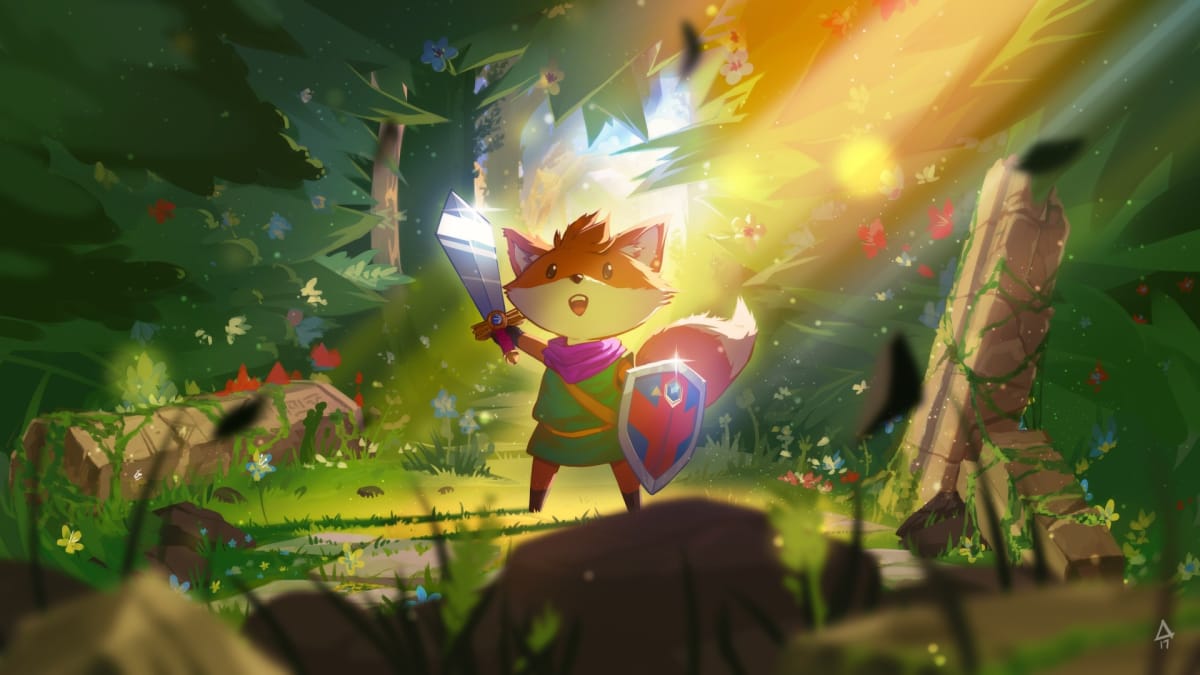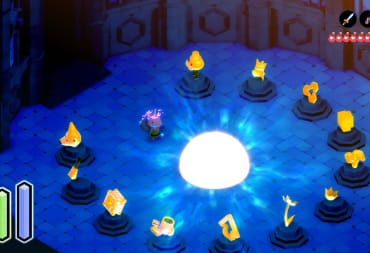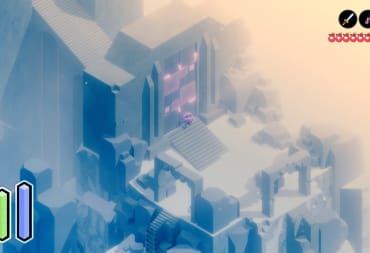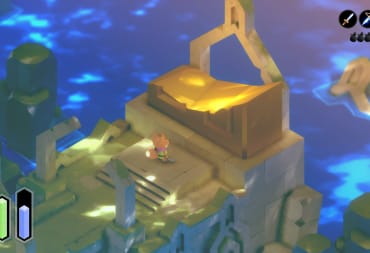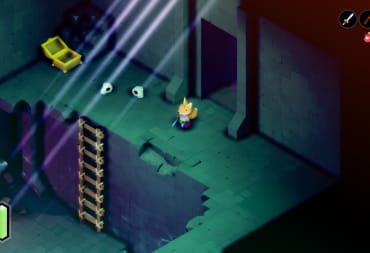Back in the good ol’ days of the Nintendo DS, my first console, I loved flipping through the instruction booklets of games. Was I a strange kid? Probably, but there were all sorts of little doodles and art to be found, which I’d later try to copy from in the form of scribbling in my sketchbook. Today, however, it’s rare to see a manual included, or in fact, any paperwork at all with physical games, and I miss the joy I got from those extra bits of paper. So, when I started playing Tunic and put together that I was collecting the pages of an in-game instruction manual, I was ecstatic. It seemed like the game was specifically tailored for me, an instruction booklet enthusiast, in some strange niche way.

What Does the Fox Say?
Starring a little red fox clothed in a green Tunic, the game clearly pays tribute to the classic Legend of Zelda games on the NES and SNES, games which required the manual to get through and had little to no text. Whatever text was there was also incredibly ambiguous besides the iconic, “It’s dangerous to go alone! Take this.” and then being handed a sword. There was no telling how much progress you made in your journey, nor what your next objective was.
Tunic follows these footsteps and has you first collect a weapon in the form stick as well as a few pages of the instruction booklet which will lead you to your first sword. The booklet, however, is almost entirely in a made-up language, aside from some keywords that are in English. Whatever you can’t make heads or tails of, you deduce from the adorable little drawings in the manual. Any signposts or dialogue you’ll come across will also be in this strange language, so some things will remain a complete mystery unless you want to go to the extreme lengths of deciphering the language yourself.
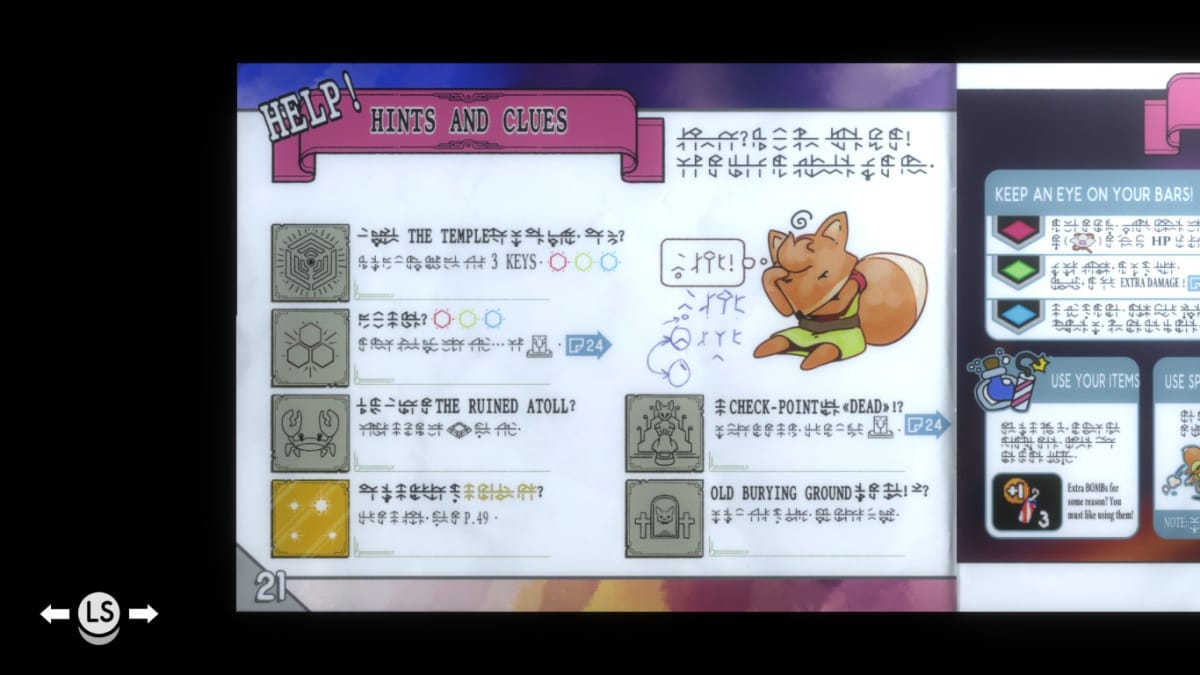
Once you clear the first area and get access to your sword, a number of areas open up to you as you gain more attack power, but most importantly can now cut through the grass (no, really, they block the path to all the other areas). As you progress, you’ll also gain access to a number of explosives and gear. Combat in Tunic is a bit more than your ordinary hack-and-slash, and includes a stamina gauge as well as a magic gauge alongside your health gauge.
What the game emphasizes quite a bit, especially in the early game, is making sure you’re being careful about your stamina gauge. In the manual, the fox even says “Everything hurts way more when I’m tired,” which is honestly, very relatable. When you run out of stamina you’re the most vulnerable and can end up taking a lot more damage than you normally. Unfortunately, I was not the most careful about it at the very beginning of the game. I ended up dodging too much, too frequently, and put this tiny fox through a lot of pain. After several beatings, I realized I could not mash my way out of this, and had to play by the book.
A Tail of Caution
That being said, Tunic can be pretty challenging, and even after conserving stamina, studying enemy patterns, and even just straight-up running as fast as my little legs could carry me, I died a lot, especially when it came to some of the boss battles. The game may seem very cute and non-threatening, but it certainly has its grueling moments. If the game’s difficulty gets to you at any point, there are accessibility options that can make the journey less harrowing, such as turning off stamina restrictions and a no-damage option.
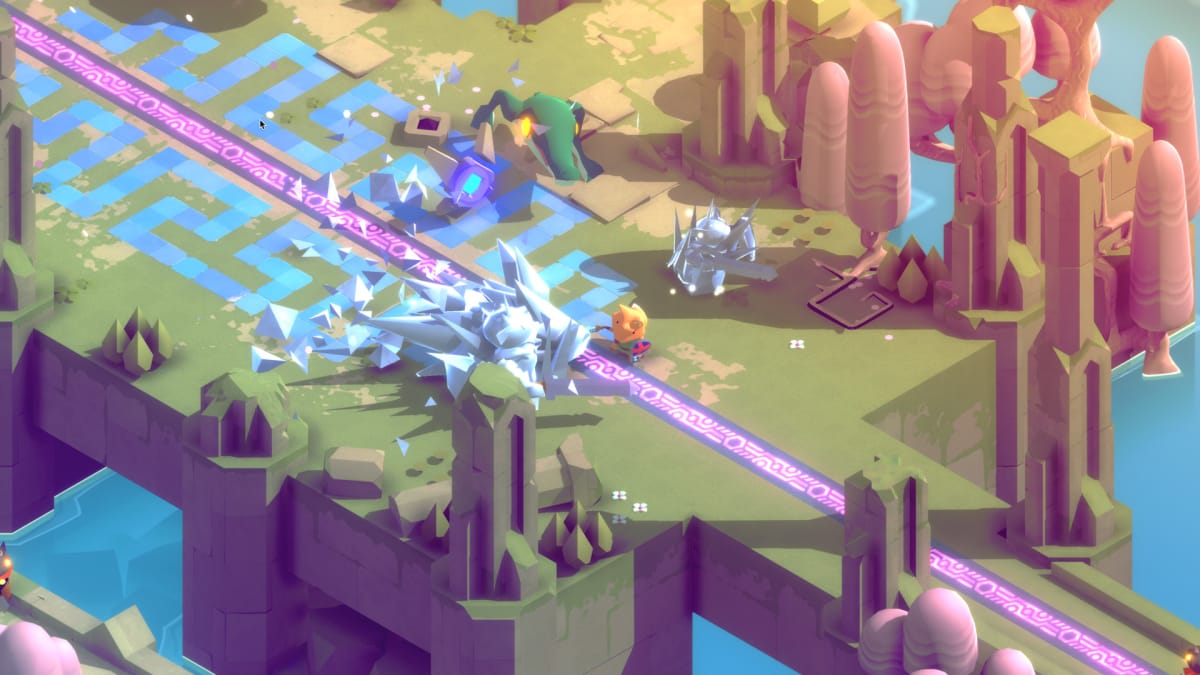
I made it a frequent thing to check the booklet. If I got some mysterious squishy thing that I had no idea what to do with, I’d immediately flip through the pages to see if there was any information. Although, sometimes I just didn’t have the page yet and accidentally would discover certain things, like making offerings at the save statue to increase my stats. Tunic rewards curiosity a lot, whether that’s through exploring every nook and cranny to find hidden paths leading to chests, or through somehow pressing the right buttons to make something work.
That being said, Tunic’s (probably only) sore spot lies in its cryptic text. While the game conveys whatever essential information through its game design, illustrations, and selective translation, the ambiguity does get tiring. At times I’d be left stumped and worried if perhaps I had missed something, but had no way of knowing so.
While I’m sure there are going to be guides out there for people who can’t be bothered to figure out the language, I can’t imagine going back and forth between the actual game, the instruction booklet, and the guide would be very fun. I’d rather have had the language be slowly revealed as you went on collecting more pages, or even as you progressed the game so it could also serve as a subtle mark of how much of the game you’d completed.

Speaking of completion, Tunic takes about 8-10 hours to get through the main game alone, and there’s also a good chunk of post-game content. For a game that’s entirely developed by one person, that’s an impressive amount.
It would be a crime on my part to not talk about the game’s visuals. Tunic really benefits from the isometric perspective as there are a ton of paths and shortcuts that are just hidden away from view because of the camera angle. The game takes you through a number of environments, such as snowy peaks as well as cherry blossom tree-filled gardens. The tilt-shift lens also adds a nice touch to the game’s deceptively calming atmosphere, and the soundtrack also adds to that experience.
Final Thoughts
On the surface, Tunic seems like your usual homage to the classic Legend of Zelda games, but it’s much more than that, and is unexpectedly, also a love letter to the gone era of instruction booklets. At times, it can be pretty trifling, but when things click into the right place, Tunic is an incredibly gratifying experience.
TechRaptor reviewed Tunic on PC with a copy provided by the publisher. The game is also available on Xbox One, Xbox Series X|S.
Review Summary
Pros
- Combat that is more than your average hack-and-slash
- Incorporation of the instruction booklet is intuitive
- Deceivingly calm art style and soundtrack
Cons
- Cryptic language can be a hassle to decipher
Have a tip, or want to point out something we missed? Leave a Comment or e-mail us at tips@techraptor.net
